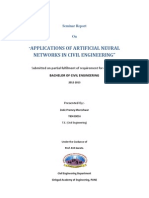Handbook Of Construction Tolerances Pdf Free

The Gypsum Construction Handbook The Gypsum Construction Handbook or any of the chapters may be downloaded and viewed in PDF format. Adobe Acrobat Reader is required to view PDF files. For free to view, print and collaborate on PDF files. The Gypsum Construction Handbook, sixth edition The full version of The Gypsum Construction Handbook.
Chapter 1 - Describes complete line of construction products, including Sheetrock brand gypsum panels and Imperial brand gypsum base for drywall and veneer plaster construction, sheathing and ceilings. Also, beads, trims, framing, insulation, fasteners, adhesives, joint compounds, coatings, tapes, plaster finishes and textures. Chapter 2 - Framing practices and procedures for wood and steel framing. Includes details for resilient channel installation, chase walls, furred ceilings and walls, and door and window openings. Chapter 3 - Detailed instructions for installing drywall and veneer bases in single and multiple layer configurations.
Building design and construction handbook / Frederick.
Also covers predecorated panels, water resistant panels, sheathing, insulation, fixtures and specialty materials. Provides information on fastener requirements and special constructions such as curved surfaces, arches, soffits, etc. Chapter 4 - Durock brand cement board products and installation procedures, including proper attachment, taping and finishing. Encompasses moisture and climatic considerations, proper framing, fasteners, and finishing options in baths, kitchens, floors and specialty uses. Chapter 5 - Complete guide to proper joint treatment and surface preparation for drywall construction.
Includes installation of corner beads, trim and control joints; hand and mechanical finishing with setting-type and drying-type compounds; addresses special environmental and lighting situations. Covers textures, resurfacing and redecorating. Chapter 6 - In-depth instructions for selecting, preparing and installing veneer plaster systems appearance and abuse-resistance options. Encompasses one-coat and two-coat veneer plaster systems and specialty finishes.
Chapter 7 - Describes full line of conventional plasters, laths and accessories for successful completion of plaster systems. Helps evaluate specific situations and end-use requirements to match plaster products to needs. Includes gypsum and plaster laths, beads and trims, clips and screws, framing components and specialty plasters. Chapter 8 - Comprehensive guide to plaster systems, including framing installation, base and lath application, accessories and control joints, plaster mixing and application and finishing options. Chapter 9 - Complete information on selection and installation of acoustical ceiling systems, including design considerations. Also contains information on standards, building codes, sound control, lighting and light reflectance, fire safety, seismic considerations and HVAC.
Chapter 10 - Outlines methods for matching systems to specific performance criteria. Covers fire and sound criteria, wood and steel partitions and sound control systems.
Specialty systems include area separation walls, cavity shaft walls, fireproofing, curtain wall/fire containment systems, thermal insulation, air water and vapor control. Chapter 11- Selection of materials, regulatory requirements, handling, job conditions, movement in structures, product quality and inspection.
Chapter 12- Trouble shooting for drywall, veneer plaster, conventional plaster and cement board problems. I9100 efs tar md5 windows download windows 7. Cites problems and how to handle them. Chapter 13 - Provides health and safety considerations relative to drywall and plaster applications. Chapter 14 - Defines tools and how to use them. Includes framing tools, board and lath tools, mixing equipment, finishing tools, hand and spray texturing equipment, machines, hoses, guns, nozzles, etc.
Precast structures should be designed and detailed so that the complete structure will be safe, functional, aesthetically appealing, and economical. No structure is exactly level, plumb, straight, and true, so all construction and materials should be specified with tolerances limiting deviation from design values. These tolerances require monitoring to construct the structure as designed. Tolerances are typically divided into three primary categories: • Product tolerances • Erection tolerances • Interfacing tolerances.